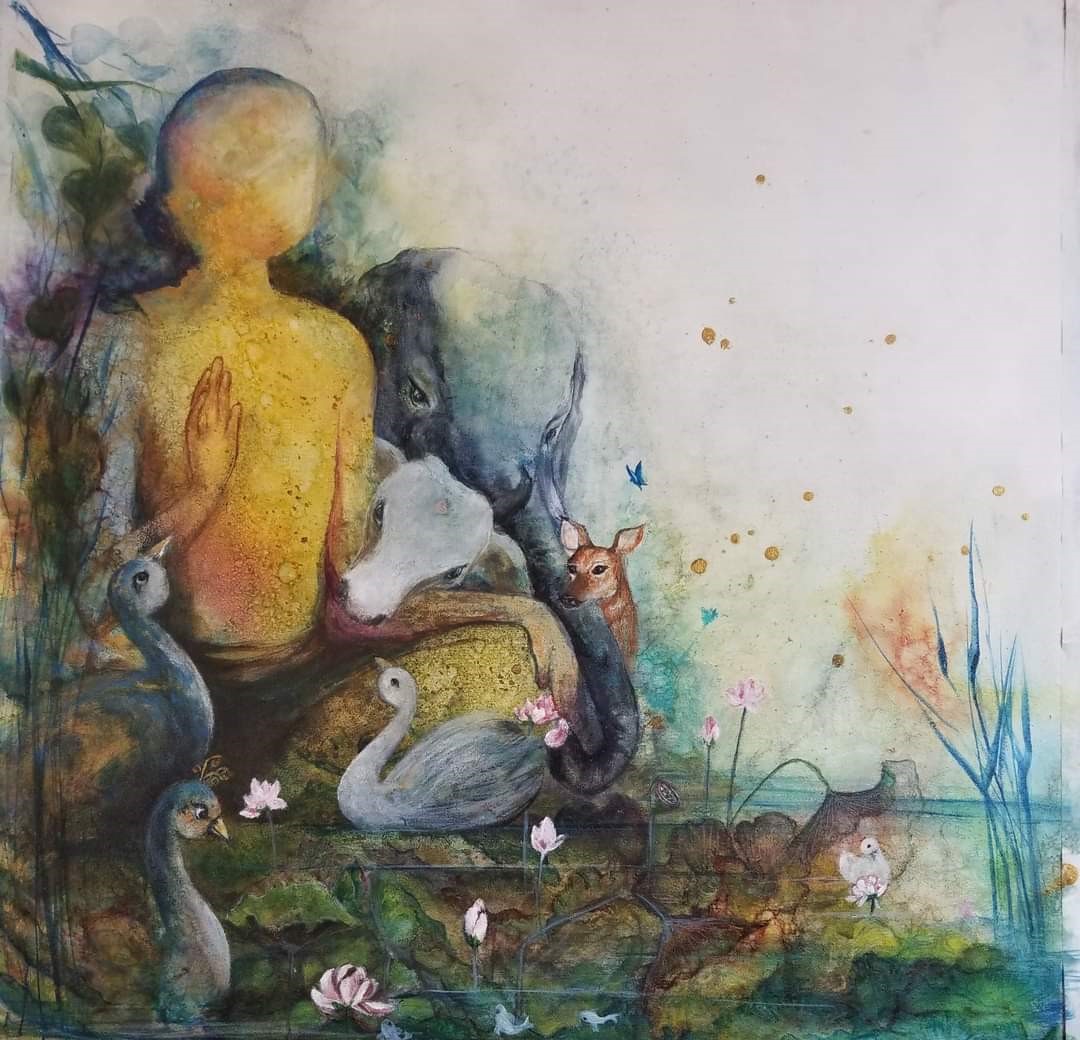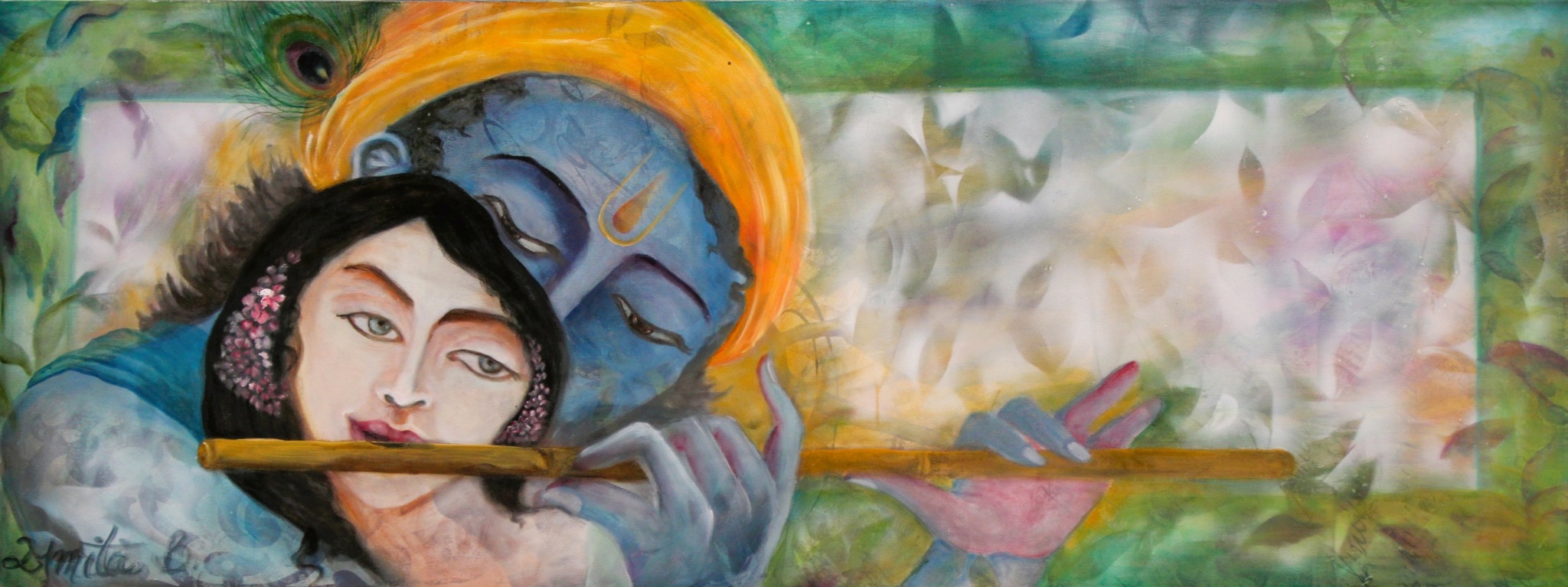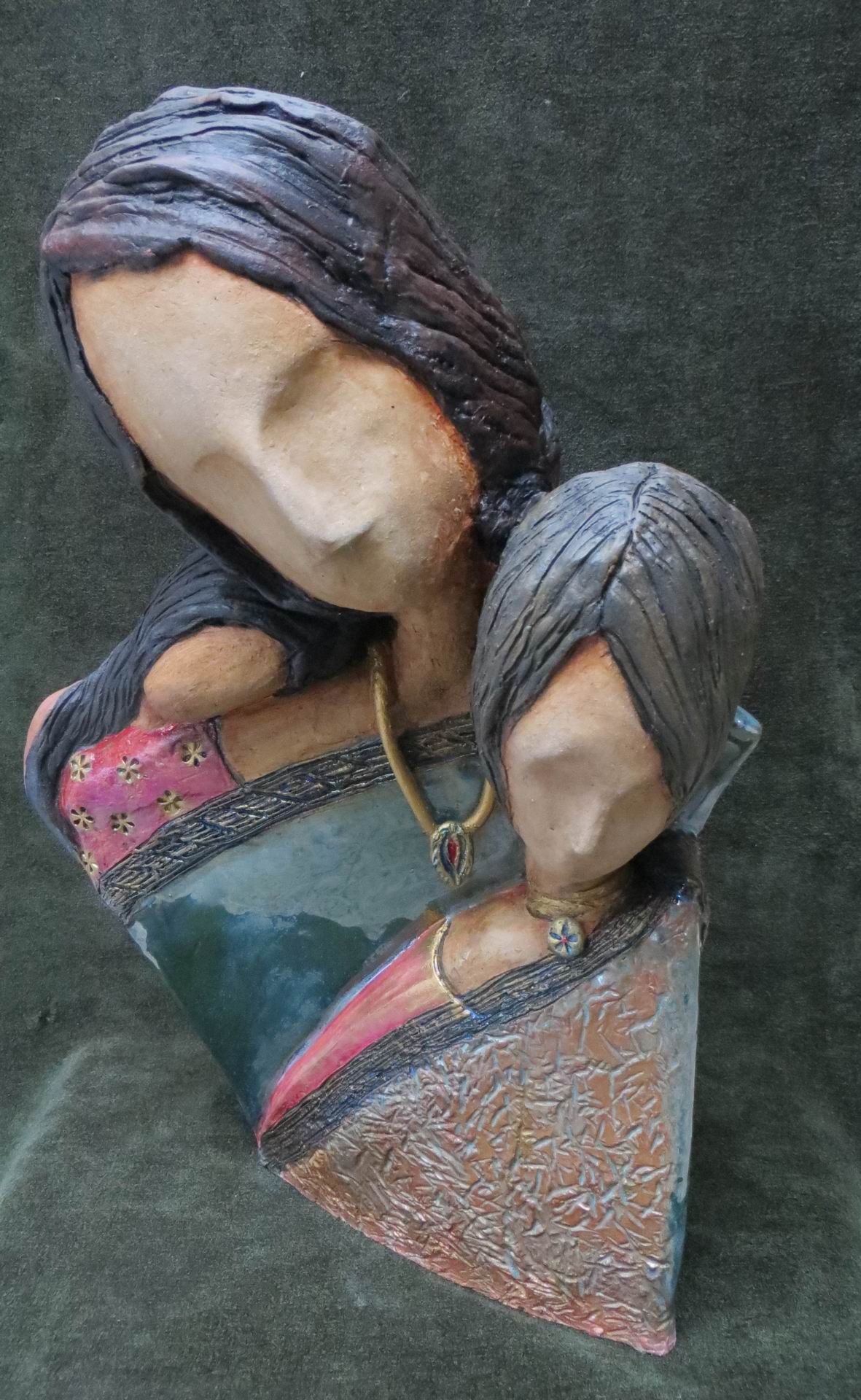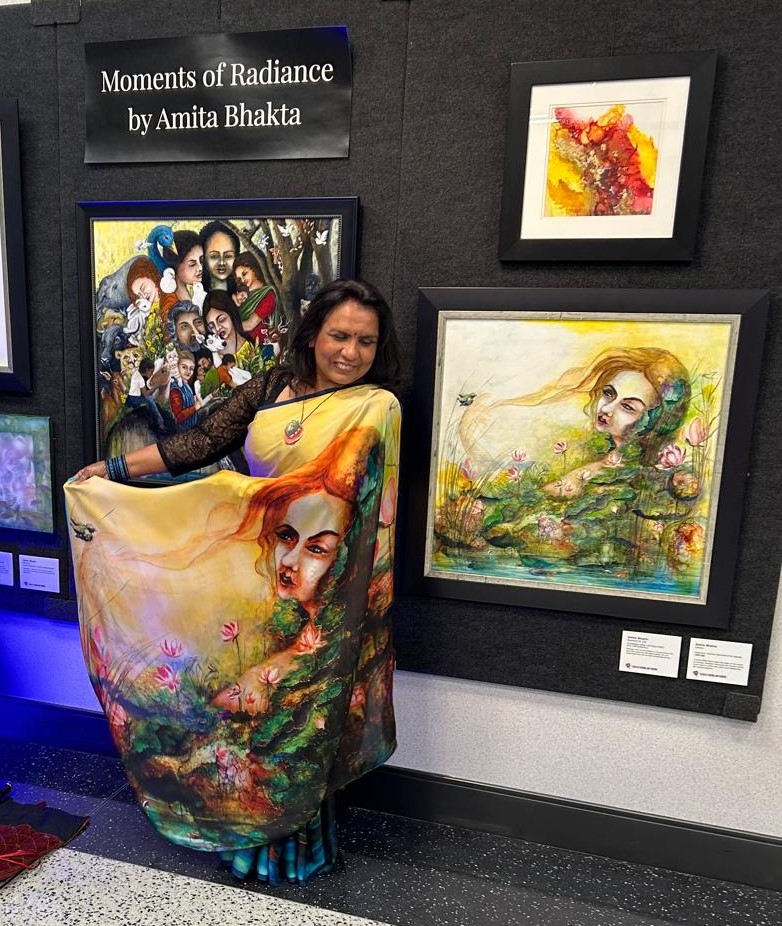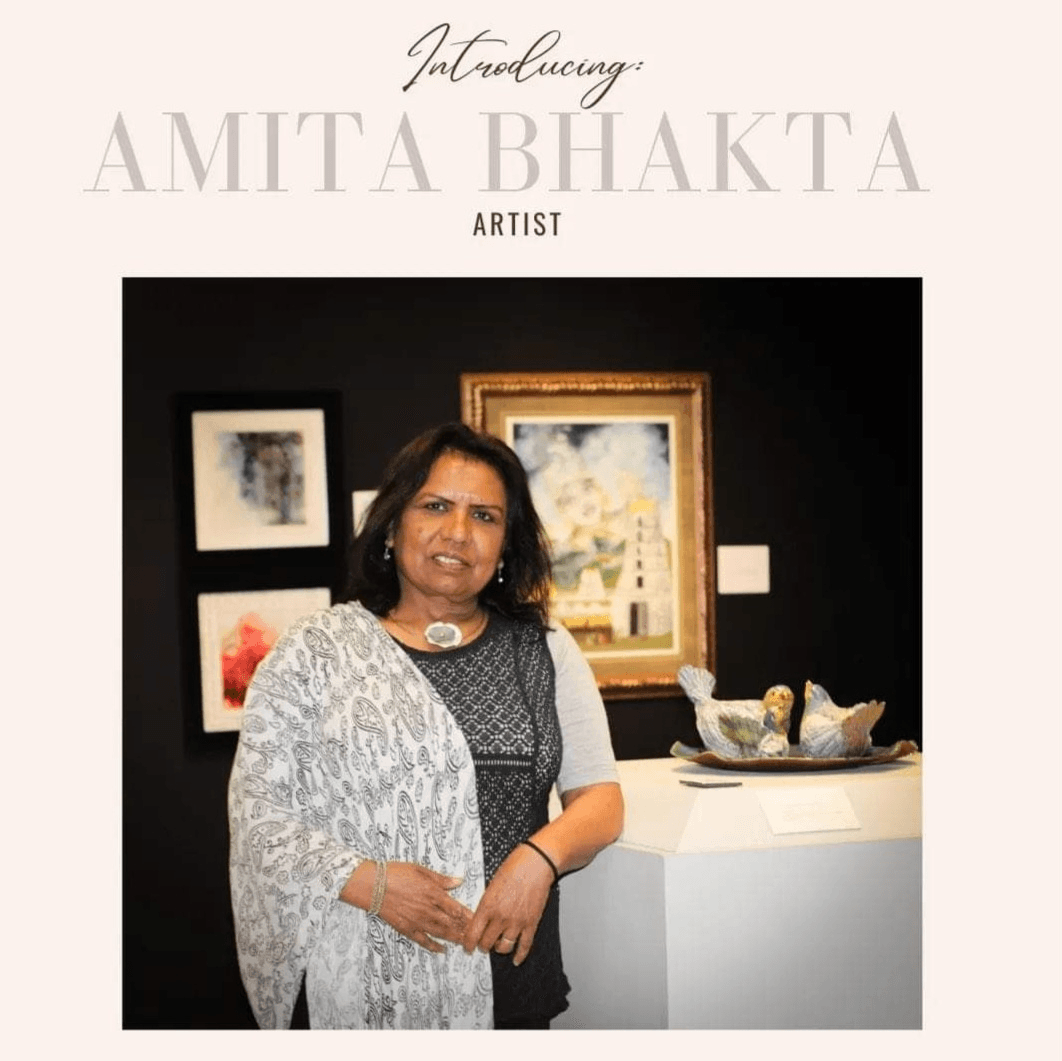Today we’d like to introduce you to Amita Bhakta.
Hi Amita, it’s an honor to have you on the platform. Thanks for taking the time to share your story with us – to start maybe you can share some of your backstory with our readers?
Traditionally, art is a part of Indian culture and I’m blessed that that tradition runs through my family.<b> </b>Ever since I saw my uncle sketch with a ball point pen on hotel postcard/letterhead, in corner of a magazine, or newspaper; I’ve had my eyes open to art. His father studied at a very prestigious art school in India called Shantiniketan and suprisingly his studies took him all the way to the Philadelphia Art Academy. Despite being amazing artists, neither my uncle nor granduncle were successful in following their passion. It’s a lesson I still think about today.
I have fond memories of growing up in India that were specifically tied to art. Like most other families, each year my mother would create a large rangoli design in our home during Diwali. However, after imigrating to the US, the traditions we practiced in India faded. At the age of fourteen assimilating to a new culture between California, Arizona, and Texas, and seeing my middle aged parents struggle to make a living – I had to grow up quickly to help us make money. Any desire I had to express myself through art was put on the back burner. I ending up starting a business in the Tennessee Valley area of North Alabama with my husband and raised two beautiful loving boys. I had forgotten fine arts for twenty years, but even when it appeared that my path was leading me away from art I was still drawn towards it in different ways like crafting, painting, poetry, and sculpting in clay for small projects. So, when my first born went off to college I finally picked up a brush to fill the empty space in my heart and I haven’t looked back since.
Like many artists, my journey into the world of visual art began as second career. It took time for me to learn the power of art but I have discovered that there is something spiritual about creating. Like most, I cannot produce art at will. As the saying goes, ‘one must wait for when the universe is ready to give’. It’s blissful to let the the creative process unfold in my studio. The method of conception to harnessing creative energy through to the finishing stage is a meditative journey that I am blessed to experience.
Alright, so let’s dig a little deeper into the story – has it been an easy path overall and if not, what were the challenges you’ve had to overcome?
My work reflects my cultural roots in India and merges with current events and my environment. Being self taught it took a while for me to gain any confidence in my art. Even though my self esteem was slow in growing, the love and support from my family and friends encouraged me to keep creating. Now, I feel bold enough to offer my work to larger audiences and push boundaries.
My father was a doctor so I was raised with the understanding that healthcare is a way to help people and from a young age I’ve always wanted to make a difference in my community. Over time I realized there are countless ways to help people in my community. As Mahatma Gandhi stated, “the end goal of any art is to bring peace”, I believe that art can heal.
Due to cultural differences it’s been a challenge for some in my local community to grasp the context of my paintings. Living for decades in a place that is resistent to change I’ve seen that people tend to shy away from art that isn’t natural to them. During my time living in the state of Alabama, the congress banned the teaching of yoga in public schools for 30 years due to the unwillingness to understand different cultures. Despite this I recognize this is a place where art is most essential and I’m grateful that through my artwork I can help my community in Alabama understand the philosophy and beautiful legacy of India.
India is diverse nation due to the fact it has hundreds of languages and dialects. Most of the languages came from Sanskrit, and to understand the DNA of the huge immigrant population of Indian Americans that call the USA their home it’s important to examine the ancient teachings in Sanskrit that bind all Indians. To do this, I have created a body of work called “Moments of Radiance” that are my visual interpretations of Sanskrit texts. My goal now is to show my work to a larger audience and I hope to find a network of Indian American visual artists who have similar passions to assist in raising awarness for Indian arts and culture in the USA.
A challenge is the scarcity of museums that give the Indian American community a true sense of identity or sense of the culture we brought to the US. This is despite there being over 4.6 million Indian Americans who pay taxes and work hard to make this land their home away from home. In contrast, the Chinese and Asian community (of about 5.4 million people) have built more than 29 museums to preserve their cultural heritage on US soil and in 2025 there will be a beautiful large museum honoring Chinese heritage at the cost of a hundred and eighty million dollars in New York. Indian Americans have just recently taken their first steps when the National Indo-American Museum (NIAM) opened in Chicago two years ago and opened a Gandhi museum in Houston this year. Much more must be done to raise awareness about our culture. I truely believe that art helps break down barriers and prejudices in society, and can lead us to a better tomorrow. Increased awarness in Indian art would also secure the roots my generation has put down as imigrants for the next set of Indian Americans to flourish in this country we call our home.
Thanks for sharing that. So, maybe next you can tell us a bit more about your work?
My two primary loves in art are painting and sculpting in clay. I enjoy developing a series of paintings with a theme in mind and over time I’ve developed several series of work. The closest to my heart is “Moments of Radiance” which is visual interpretation’s of inspirational text from Veda, Upanishad, Mahabharat, Ramayan, and Kalidas’s fine literature in Sanskrit language. Some of those paintings contain multitudes to me and I’ve now fashioned them into scarves, bags, and sarees to wear. At first I had them printed on to six yard fabric and wore it, then many of my Indian friends requested me to make more for them! I’m now working on small fashion show for the opening nights of exhibitions that are coming up thi year. Next I would like to get back to sculpting in clay to add to my series on “Moments of Radiance”.
I also like to teach rangoli, especially to children of Indian Americans. Rangoli is a folk art from India that traditionally was part of the daily routine of Indians to welcome a new day. Now it has mostly disappeared from daily life and is only found during festivals. Teaching Rangoli’s importance as a daily art routine that is not permanent, going over it’s origin, and practice of various techniques to younger generations has become important for me.
In addition to being an artist, I am an advocate for other Indian American artists. Through my position on the board of the Tennessee Valley Art Association (TVAA), I gained support to create an exhibition of Indian American art where other artists could join me in displaying their work. It was the first time on American soil where 22 Indian American artists gathered for one exhibition called Darshan: Visions of India. There were beautiful pieces of art in all mediums from paintings in oil, acrylics, and watercolors; to photography, ceramics, sculptures, rangoli, videography, and even intricate paper cuttings. The event led us to form a nonprofit Indian American Artist Association (IAAA) with we can connect, share our ideas, techniques, and exhibition opportunities with one another. Darshan: Visions of India was so well received by my local community that the TVAA helped us curate a traveling exhibition of Indian American art (including my own) called Traveling Darshan. It’s an honor to be part of such a creative and supportive community. I would love for our exhibition to reach a broader audience and become a part of the pantheon of the amazing artwork we revere in this country.
What do you like best about our city? What do you like least?
I’ve been fortunate to have lived in places where art is treasured and preserved for the benefit of society. Art is vital for communities to grow, sustain, and flourish. Similarly, I truly believe, art forces us to reflect on the times and express creativity that divulges our thoughts and emotions. When an artist can truly reflect themselves in their work and be accepted by society – things can change for the better within them and their surroundings can improve greatly. I’m grateful to have felt as though I’ve tapped into this with my work in the Shoals area.
My inspiration comes from nature. I feel some synergy living on the banks of the Tennessee River and being from a city on the Tapi river in India. When I first immigrated to the US I spent many years in the deserts of Arizona and West Texas so I truly appreciate the lush life and the culture that develops around a river. The river continues nourish my creativity and it shows up in both a direct and in indirect ways in my work. For example, I paint in very thin layers like watercolor (even when I am applying a glaze or painting in acrylics, oils, or encaustics), and I can see the lure of river in my color choices in fluid lines. The river is big reason I feel at home in my city.
Art and humanities has a history of flourishing in the Tennessee Valley region of Alabama. From the Father of Blues W. C. Handy, the Muscle Shoals music scene, Helen Keller being from here, and the traditions held by Native Americans in this area, this soil if furtile ground to create and has helped me on my artistic journey. Beyond the physical world, like the regular practice of meditation, working in my studio has helped me connect with myself in a clear and distinct way.
As I mentioned before, a main challenge in my area has been the unwillingness of some to understand different cultures. This close-mindedness leds to inherent biases and inhibits expression in society. Another dislike is the need for constant stimulation and instant satisfaction. I hope people will continue to use traditional mediums of visual art like painting on canvas and creating clay sculptures to reflect inwardly – especially as society’s attention span continues to dwindle.
Contact Info:
- Website: www.artbyamita.com
- Instagram: @artbyamita2020
- Facebook: http/Art by Amita from Alabama
- Youtube: Amita Bhakta
